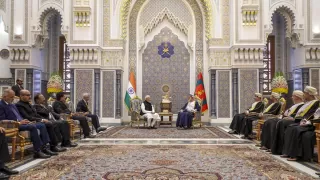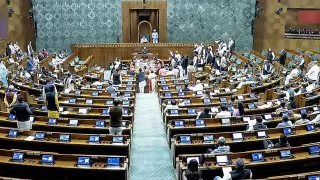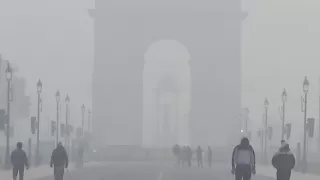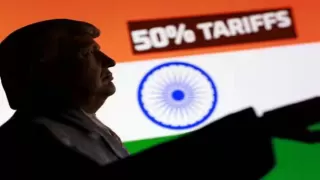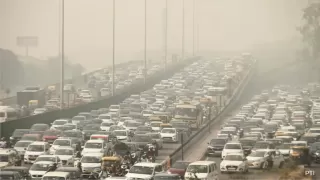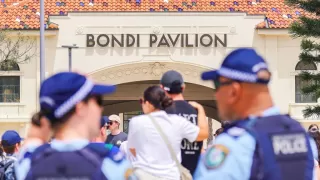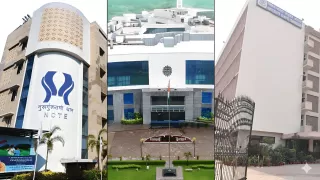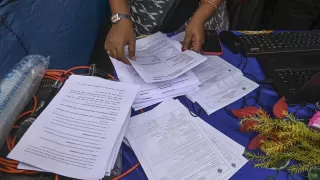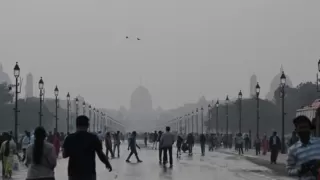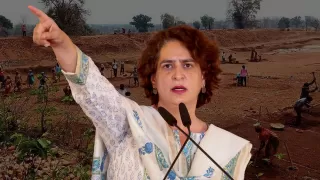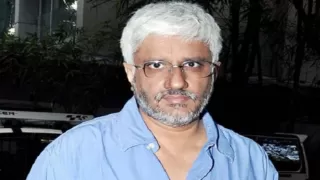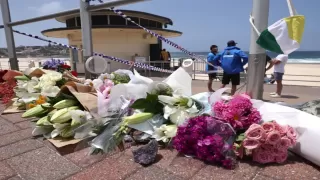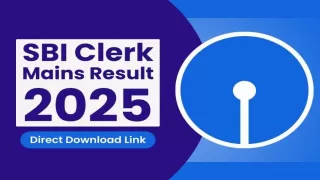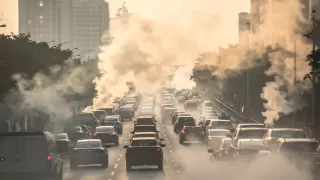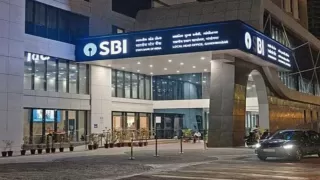India’s air pollution crisis has once again reached a tipping point, prompting urgent appeals for nationwide action. A new petition before the Supreme Court calls for declaring a “National Public Health Emergency” as toxic air continues to choke cities and villages alike. The petitioner warns that the country’s worsening air quality has turned into a full-blown health disaster, affecting millions of people across social and economic divides. The plea, filed by wellness advocate Luke Christopher Countinho, underscores the alarming health impact of pollution on India’s children, noting that “2.2 million schoolchildren in Delhi have already suffered irreversible lung damage.”
Filed under Article 21 of the Constitution, the petition argues that the right to life includes the right to breathe clean air. Despite multiple government initiatives, pollution levels across India remain dangerously high, and the petitioner asserts that the failure of effective implementation has made the crisis systemic. Cities such as Delhi, Lucknow, Patna, and Kolkata continue to record air quality levels that are far above national and global safety standards. The situation has now reached such severity that citizens are exposed daily to air deemed “hazardous” by international benchmarks.
The plea draws attention to a stark reality — India’s air pollution is no longer an environmental problem but a national emergency that directly affects public health, economic productivity, and life expectancy. It calls for immediate, enforceable action from the central and state governments to control the crisis before it becomes irreversible. The petition further demands the constitution of a National Task Force on Air Quality and Public Health to coordinate efforts and ensure accountability.
Air Pollution Levels Beyond Safe Limits
The petition highlights shocking statistics regarding air quality across major Indian cities. The annual permissible limits under the National Ambient Air Quality Standards (NAAQS) are 40 μg/m³ for PM₂.₅ and 60 μg/m³ for PM₁₀. However, actual readings show levels far exceeding these benchmarks: Delhi records approximately 105 μg/m³ for PM₂.₅, Lucknow around 90 μg/m³, and Patna nearly 131 AQI equivalent. These figures indicate that millions are breathing air several times more toxic than what the World Health Organization (WHO) considers safe — just 5 μg/m³ for PM₂.₅ and 15 μg/m³ for PM₁₀.
The petitioner points out that despite years of awareness and policy interventions, pollution continues to worsen. Many cities that were part of the National Clean Air Programme (NCAP) have failed to meet even modest targets. In fact, around 25 cities have seen an increase in pollution levels since 2017, indicating weak enforcement and fragmented planning. The petition calls this an “institutional failure” that demands judicial intervention.
Failure of Implementation and Monitoring
While the government has launched various programs, including the NCAP and Graded Response Action Plan (GRAP), their results have been limited. The petition notes that air quality monitoring in India is insufficient, both in scale and scope. Experts estimate that at least 4,000 monitoring stations are required nationwide, yet the existing network falls drastically short, particularly in rural and industrial regions. This leaves millions of people’s exposure unrecorded, creating what the petition terms “data shadows” — blind spots where pollution persists unseen and unaddressed.
Moreover, enforcement under the Air (Prevention and Control of Pollution) Act, 1981 has weakened due to resource constraints, fragmented oversight, and minimal prosecution. In Delhi, one of the most polluted cities in the world, not a single criminal case was filed under the Air Act in 2019. The petitioner emphasizes that this lack of accountability allows industries, vehicles, and construction sites to operate with impunity, releasing pollutants unchecked.
Children and Vulnerable Populations at the Forefront
Perhaps the most heart-wrenching claim in the petition is the effect of air pollution on children. Medical studies have confirmed that more than 2.2 million schoolchildren in Delhi alone have suffered irreversible lung damage due to prolonged exposure to polluted air. This damage not only affects their current health but also increases their lifetime risk of respiratory and cardiovascular diseases. The petitioner argues that this constitutes a violation of children’s right to health and education under the Constitution.
Vulnerable groups such as the elderly, outdoor workers, and those living in informal settlements face similar risks. The plea underscores that pollution disproportionately harms the poor, who often live near industrial areas or congested traffic zones. The lack of clean energy options and inadequate healthcare access amplifies the crisis in these communities, making pollution a profound issue of environmental justice.
Systemic Weaknesses in Air Quality Management
The plea exposes how India’s air quality management remains largely urban-centric and reactive rather than preventive. The Graded Response Action Plan (GRAP), which is meant to mitigate severe pollution events, often activates only when air quality reaches “severe plus” levels. Measures such as anti-smog guns, mist sprayers, and artificial rain are described as “symbolic gestures” that fail to address emissions at their source.
Industrial and vehicular emissions continue to rise despite the introduction of Bharat Stage VI standards. Independent assessments reveal that even new-generation vehicles emit pollutants several times higher than permissible limits — with buses and taxis being the worst offenders. The petitioner stresses the urgent need for continuous emission monitoring systems (CEMS) and stricter enforcement against violators.
National Clean Air Programme (NCAP) Under Scrutiny
Launched in 2019, the NCAP aimed to reduce particulate matter concentrations by 20–30% by 2024, later revised to 40% by 2026. However, the petition argues that NCAP’s targets remain “non-binding” and lack statutory force. As a result, there is no penalty for cities that fail to meet objectives. Of the 130 identified non-attainment cities, fewer than 30 have shown measurable improvement, raising serious questions about the program’s design and governance.
The plea calls for NCAP targets to be made legally binding, with fixed deadlines, performance indicators, and penalties for non-compliance. It also seeks transparency through public disclosure of city-level emission data and progress reports.
Reliefs Sought in the Petition
In light of these concerns, the petitioner has requested several major reliefs from the Supreme Court:
- Declaration of air pollution as a National Public Health Emergency.
- Formulation of a binding National Action Plan with clear timelines and enforcement mechanisms.
- Creation of a National Task Force on Air Quality and Public Health with representation from all key ministries and civil society.
- Immediate measures to curb stubble burning through in-situ crop residue management and incentives for farmers.
- Phasing out of high-emission vehicles and promotion of e-mobility, public transport, and non-motorized options.
- Mandatory continuous emission monitoring for industries and public disclosure of emission data.
Additionally, the petitioner urges the government to prioritize air quality monitoring in rural and underserved areas and strengthen environmental governance by empowering local bodies and pollution control boards.
The Way Forward
India’s battle with air pollution is not merely a fight for cleaner skies but a struggle for survival. The petition serves as a wake-up call to the authorities to act decisively before the situation worsens beyond repair. Experts agree that piecemeal measures will no longer suffice — what India needs is a coordinated, legally binding, and time-sensitive national response that treats clean air as a fundamental human right.
With the Supreme Court now set to examine the plea, millions of citizens are watching closely, hoping that this intervention will mark a turning point in India’s environmental governance. The outcome could redefine the nation’s commitment to sustainable development, public health, and constitutional accountability — and perhaps, finally, bring back the right to breathe freely.
Also Read: Trump Slams Zohran Mamdani’s ‘Angry’ Victory Speech




